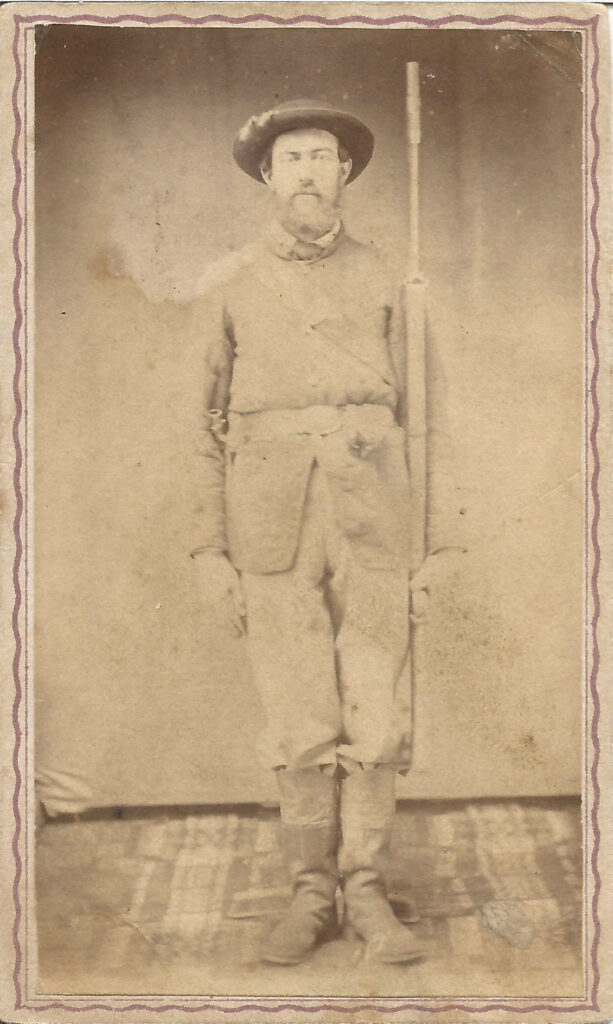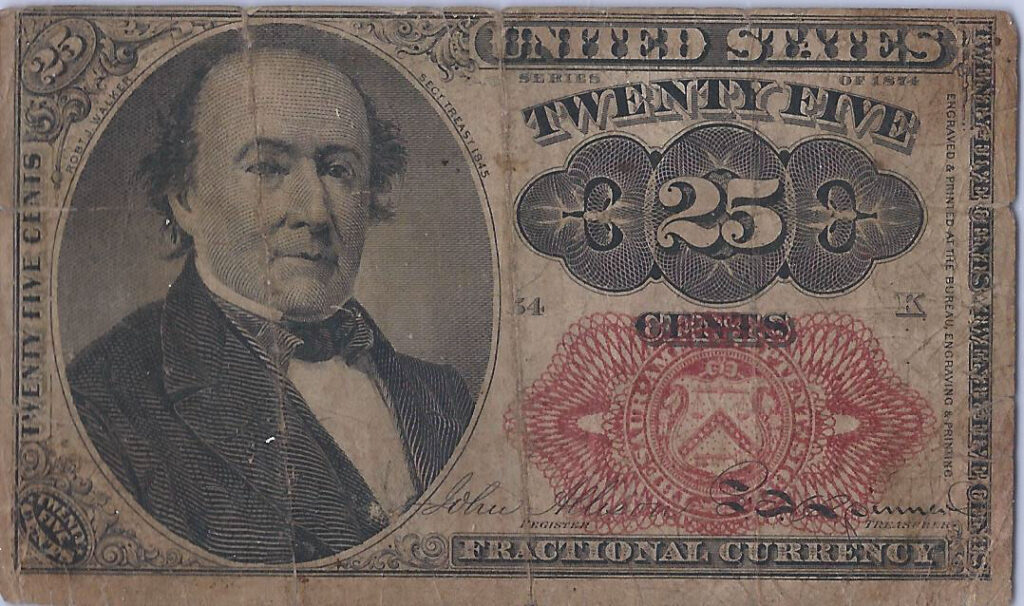Section #19 - Regional violence ends in Kansas as a “Free State” Constitution banning all black residents passes
Chapter 213: Governor Geary Resigns And Robert Walker Is Sent To Kansas
March 12, 1857
John Geary’s Resignation Is A Blow To Stability In Kansas

On March 12, 1857, five days after the Dred Scott decree is announced, President Buchanan’s attention is back on Kansas, when John Geary resigns as Territorial Governor of Kansas.
In hindsight he cites two reasons for withdrawing after only six months of service: first, unreliable support from the Pierce administration; second, the demoralizing effects of watching the “depravity” exhibited by both sides in the fight.
I have learned more of the depravity of my fellow man than I ever before knew…I have thought my California experience was strong, but I believe my Kansas experience cannot be beaten.
But Geary will be judged the most capable of the six Governors in the history of “bloody Kansas.”
When he arrives on the scene two sizable and well-armed militias are on the verge of waging open warfare. His response is immediate and unequivocal. As in Mexico, he mounts up and rides to the action, confronting and ending the threat to Lawrence on September 15, only six days after taking office.
Unlike his wavering predecessors, no one doubts his pledge to lead U.S. troops against either side should the need arise. While this does not totally stamp out further vicious individual acts of vengeance, it does put a one-year hold on prospects for any large-scale battles and casualties.
Unfortunately Governor Geary is less successful at converting reduced violence into a lasting political solution.
While the Free-Staters never fully trust him because of his reputation as a Democrat and a Buchanan backer, he remains true to his pledge to be “politically impartial.”
This includes irritating the Pro-Slavery side by vetoing legislation he finds improper, and also refusing to confirm William Sherrard, a particularly volatile native of Virginia, to succeed Samuel Jones as Sheriff of Douglas County, which includes the town of Lawrence. Sherrard is outraged, threatens to assassinate Geary, and fires his revolver at a hearing on February 18, 1857 to review his case. In the resulting melee, he is shot and killed in the room by one of Geary’s representatives at the meeting.
As he departs, Territorial Kansas is left with two legislatures, two Governors and magistrates, two sets of laws on the books – a recipe for ongoing civil disorder.
On March 12, 1857 Geary hands the temporary reins back to acting Governor Daniel Woodson, for his fifth and final stint as interim stand-in.
Key Events In Kansas Around John Geary’s Term As Governor
| 1856 | Milestone |
| July 4 | Col. Edwin Sumner disbands Topeka (Free-State) legislature |
| September 9 | John Geary begins his term as Governor |
| September 13- 14 | Battle of Hickory Point |
| September 15 | Geary and U.S. troops stop pro-slavery militia threat at Lawrence |
| October 6 | Annual election of Kansas legislators is boycotted by Free-Staters Pro-Slavery representatives remain in power at Lecompton |
| 1857 | |
| January 7 | Topeka legislature reconvenes in defiance of prior shutdown |
| January 11 | Law and Order Party now called the National Democrats |
| January 12 | New legislators meet at Lecompton |
| January 19 | Geary denies appointment of Sherrard as Sheriff |
| February 18 | Sherrard killed after firing his gun during a hearing |
| March 4 | James Buchanan becomes President |
| March 20 | Governor Geary resigns |
| May 24 | New Governor Robert J. Walker arrives in Kansas |
John Geary’s story does not, however, end with Kansas. When the Civil War breaks out he rejoins the army, rises to the rank of Major General and performs admirably in numerous battles in the eastern theater. He then becomes Governor of Pennsylvania, serving from 1867 to 1873, before dying suddenly of a heart attack three weeks after leaving that office, at 53 years of age.
March 1857
Robert J. Walker Becomes The Fourth Territorial Governor In Kansas

In response to Geary’s departure, Buchanan will turn to 55 year old Robert J. Walker, a trusted Democrat, former U.S. Senator, and a successful Secretary of the Treasury under James Polk. His pro-Southern credentials are also well established. After practicing law in Pittsburgh, he moves to Natchez, Mississippi, becomes a slave owner and trader, and supports nullification in 1832 along with aggressive policies toward territorial expansion.
On the face of it, the diminutive Walker (five feet tall and one hundred pounds) looks up to the task, despite inheriting two diametrically opposed political parties, each with its own legislature, and each claiming to represent the will of the Kansas people:
- One group, the Pro-Slavery forces, now operating as members of his Democratic Party, have been chosen in an annual election on October 6, 1856, boycotted by their opponents. They are scheduled to meet in September 1857 at the town of Lecompton to write an official state constitution.
- They are opposed by the Free State Party, whose “renegade” legislature has reconvened at Topeka on January 7, 1857, after being disbanded by Colonel Sumner and his U.S. troops back on July 4, 1856.
Buchanan’s instructions to Walker are quite clear: first, shut down the Topeka operation for good; second, get the Lecompton body to write a Constitution that has Kansas admitted to the Union as a Slave State, both to restore order there and to cater to his Southern base.
There are, however, genuine risks associated with the President’s plan.
One is that the Lecompton document might prove so controversial that it alienates his support among the northern wing of his Democratic Party. This concern is particularly relevant in the U.S. House, where he will need solid northern support to pass a bill to admit Kansas.
Another risk is even more troublesome. It involves the long-standing Democratic Party promise to rely on “popular sovereignty” to resolve all conflicts related to slavery in the new territories. If there is a dispute, “let the people decide” in a fair vote, with majority rule. This pledge has been a central party plank since Lewis Cass and Stephen Douglas fashioned it in the campaign of 1848 – and Buchanan himself supports it outright in the 1856 race.
Thus Americans have been led to expect that the Lecompton Constitution will be voted on by the people of Kansas before it applies for admission as either a Free State or a Slave State.
But now this poses a problem for Buchanan and his Southern backers. It is a growing fear that the majority of those actually residing in Kansas oppose the presence within their borders of not only slaves, but all blacks, and will thus vote in favor of a Free State designation.
The prospect of an election loss sets the wheels in motion within Buchanan’s cabinet and among his Southern supporters to find a plausible alternative to a popsov vote.
While this thinking is in process, Robert Walker heads off to Kansas.
May 1857
Walker Gets Off To A Shaky Start In Kansas
Walker arrives in Kansas on May 27, 1857, taking over from Acting Governor Daniel Woodson. His welcoming address manages to upset both sides in the disputes.
He slams the Free Staters as a mix of fanatical abolitionists – “who would threaten not only Kansas but the Union” – and utter hypocrites eager to ban all Negroes from ever residing in their state.
He then dismisses their opponents for engaging in dangerous warfare over land whose climate is unfit for slavery and cotton.
He also calls upon Topeka to cease its operations and try to win “official seats” in the October election of a new legislature — and then promises that any Constitution written by the Lecompton delegates will be voted on by all Kansans before submission to Washington for statehood.
Both of these declaration will soon come back to frustrate Buchanan’s wishes.
Sidebar: The Baffling Array Of Territorial Governors In Kansas
The Kansas Territory will have six official Governors and four Acting back-ups between its original organization in 1854 and its admission as a State. President Franklin Pierce names the first three: Reeder, Shannon and Geary; James Buchanan the final three: Walker, Denver and Medary.
Acting Governor Daniel Woodson also plays a sizable role during the early, most violent period, as a supporter of the Pro-Slavery side.
Ironically the Free-Stater’s designated Governor, Dr. Charles Robinson MD, imprisoned for treason in 1856, becomes the state’s chief officer after its admission to the Union in 1861 as the 34th member.
Governors Of The Kansas Territory: 1854-1861
| Appointed | From: | To: |
| Andrew Reeder | July 7, 1854 June 23, 1855 | April 17, 1855 August 16, 1855 |
| Wilson Shannon | September 7, 1855 July 7, 1856 | June 24, 1856 August 18, 1856 |
| John Geary | September 9, 1856 | March 12, 1857 |
| Robert Walker | May 27, 1857 | December 15, 1857 |
| James Denver | December 21, 1857 July 30, 1858 | July 3, 1858 October 10, 1858 |
| Samuel Medary | December 18, 1858 September 15, 1859 June 16, 1860 November 26, 1860 | August 1, 1859 April 15, 1860 September 11, 1860 December 17, 1860 |
| Acting | ||
| Daniel Woodson | April 17, 1855 August 16, 1855 June 24, 1856 August 18, 1856 March 12, 1857 | June 23, 1855 September 7, 1855 July 7, 1856 September 9, 1856 April 16, 1857 |
| Frederick Stanton | April 16, 1857 November 16, 1857 | May 27, 1856 December 21, 1857 |
| Hugh Walsh | July 3, 1858 October 10, 1858 August 1, 1859 April 15, 1860 | July 30, 1858 December 18, 1858 September 15, 1859 June 16, 1860 |
| George Beebe | September 11, 1860 December 17, 1860 | November 26, 1860 February 9, 1861 |
| As A State | ||
| Charles Robinson | February 9, 1861 | January 12, 1863 |